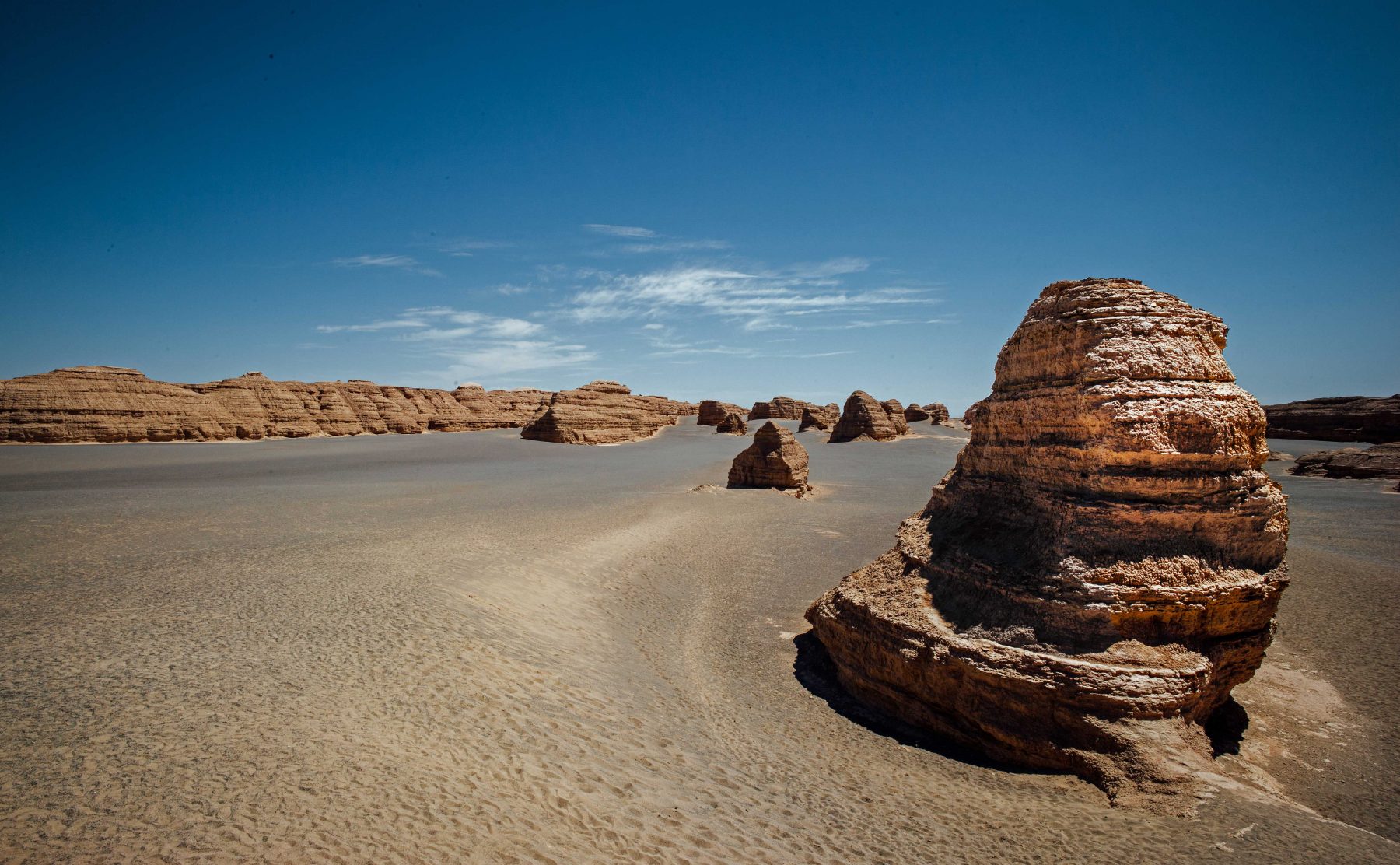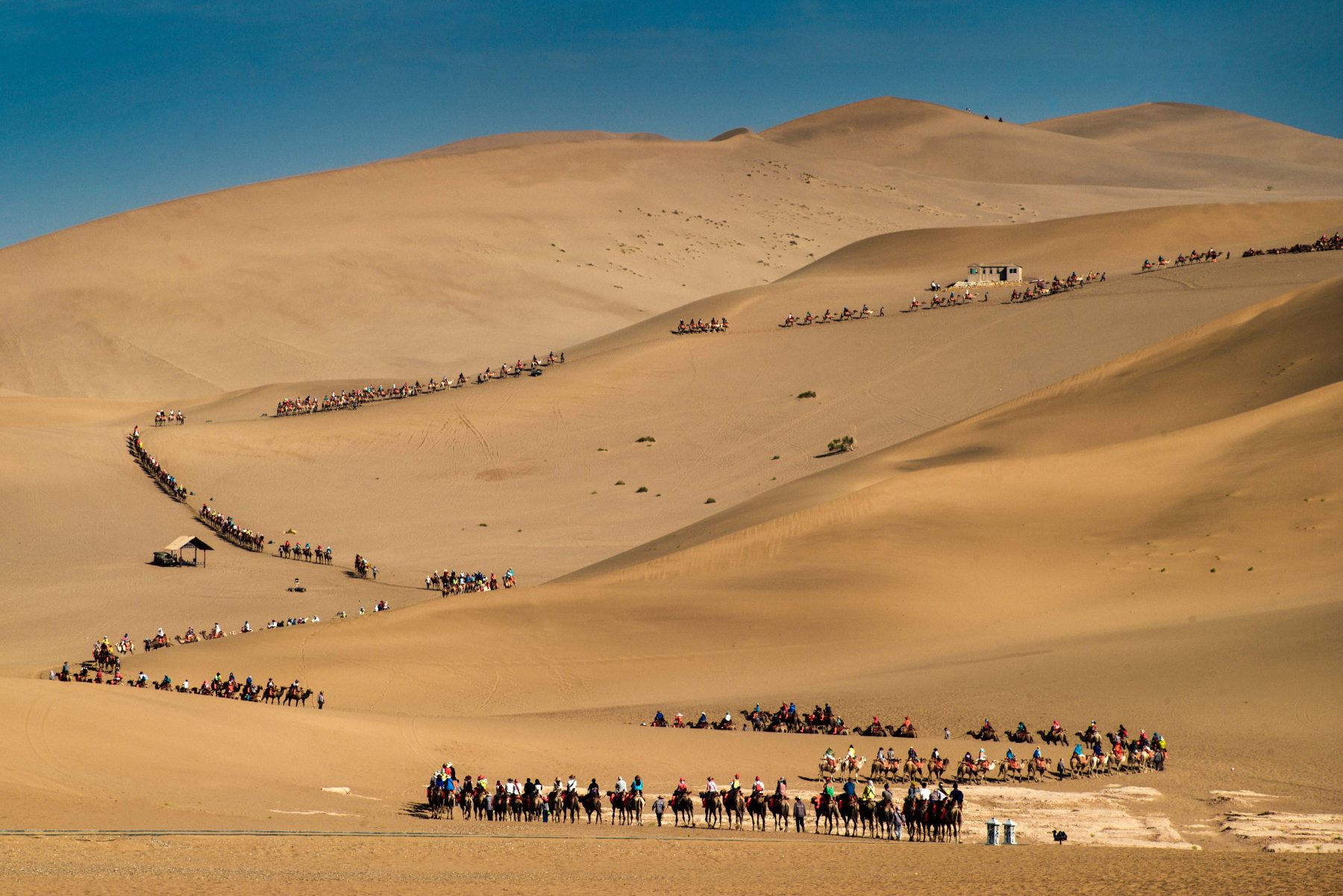Here are the details of the itinerary for the Silk Road Expedition to China, June 4–10, 2017.
[icon_timeline time_block_bg_color=”#ffffff” time_sep_color=”#01793b” time_sep_bg_color=”#01793b” tl_animation=”tl-animation-slide-out”][icon_timeline_item time_title=”Day 1 – 4th June 2017 Shanghai – Lanzhou, Ganshu Province”]Depart from Shanghai Pudong Intl Airport on a domestic flight and arrive in Lanzhou in the afternoon, the capital city of Gansu province in Northwest China. Check in hotel and rest. Visit to the Lanzhou Museum to have the brief understanding of the ancient Silk Road and its history. Travel to Wuwei by late afternoon. Wuwei city is positioned along the Hexi Corridor. Historically it was the only route from central China to western China and the rest of Central Asia. Check in hotel and dinner. Overnight at Wuwei.[/icon_timeline_item][icon_timeline_item time_title=”Day 2 – 5th June 2017 Zhangye Danxia National Geological Park”]Following breakfast, pay a visit to the Tiantishan Grottoes with a 9 storey Buddha statue built 1600 years ago. Tiantishan Grottoes are the earliest chiseled grottoes in China, and are representative of the art of China’s earliest grottoes. After lunch, proceed to Zhangye Danxia National Geological Park. The park is called ”China’s rainbow mountains”, known for its colorful rock formations. It has been voted by Chinese media outlets as one of the most beautiful landforms in China. The Geological Park is full of unusual colours of the rocks, which are smooth, sharp and several hundred meters tall. They are the result of deposits of sandstone and other minerals that occurred over 24 million years. The result, similar to a layer cake, it is connected to the action of the same tectonic plates responsible for creating parts of the Himalayan mountains. Overnight at Zhangye town.[/icon_timeline_item][icon_timeline_item time_title=”Day 3 – 6th June 2017 Jiayu Guan Pass”]Relish a rare opportunity to visit JiayuGuan Pass. It is the first pass at the west end of the Great Wall of China. The pass is located at the narrowest point of the western section of the Hexi Corridor and lies between two hills. The structure lies near an oasis on the extreme western edge of China. It was built during the early Ming dynasty, sometime around the year 1372. Jiayuguan is the most intact surviving ancient military building. The pass is also known by the name the “First and Greatest Pass Under Heaven”. The fortress there was greatly strengthened due to fear of an invasion by Timur. However Timur died of old age while leading an army toward China. After lunch, visit the Overhanging Great Wall, which is an important part of the defense network of Jiayuguan Pass. Viewed from a distance, the Wall appears like a dragon overhanging the slope, hence the name. Built on the eastern slope of Black Mountain, it is not visible to anyone looking from the west to east. This was to fence off intruders who tried to attack inner China from here through the Black Mountain Canyon. Overnight at Jiayu city.[/icon_timeline_item][icon_timeline_item time_title=”Day 4 – 7th June 2017 Dunhuang and Gobi Desert”]Continuing the journey to the west, visit Dunhuang, a city located at the edge of the Gobi Desert which was once a frontier garrison on the Silk Road. Dunhuang is situated at a vital strategic point and is of great logistical importance on a crossroads of two major trade routes within the Silk Road network. Due to its strategic position at the crossroads of the ancient Southern Silk Route and the main road leading from India via Lhasa to Mongolia and Southern Siberia, Dunhuang was one of the first trading cities encountered by merchants arriving in China from the west. It is also an ancient site of Buddhist religious activity, and was a popular destination for pilgrims. It also acted as a garrison town protecting the region. In the afternoon, we proceed to Gobi Desert to visit Yueyaquan Lake. This is a crescent-shaped lake in an oasis. Mildred Cable & Francesca French visited the lake during their travels in the region and recorded their impressions in their book The Gobi Desert in 1950. Enjoy the desert at Mingsha Shan (Eco Sand Dunes), try out the camel ride or hike up on the sand dunes to enjoy the spectacular sunset. Overnight at Dunhuang city.[/icon_timeline_item][icon_timeline_item time_title=”Day 5 – 8th June 2017 Yumen Pass, Dunhuang Yardang National Geopark”]
Morning visit to Yumen Pass or Jade Gate. During the Han dynasty (202 BC – 220 AD), this was a pass through which the Silk Road passed, and was the one road connecting Central Asia to China and the former called the Western Regions. Traders in ancient time travelled to ‘The Western Regions’ left China through Yumen Pass. Named for the many jade caravans that passed through it, and continuing their long caravan journeys to India, Parthia, and the Roman Empire. Proceed to Dunhuang Yardang National Geopark. Learn about unique rock formations in the park developed over a period of 700,000 years created over time by the soft part of the earth’s surface being eroded by wind and rain. Overnight at Dunhuang city.[/icon_timeline_item][icon_timeline_item time_title=”Day 6 – 9th June 2017 Mogao Caves”]
The Mogao Caves, also known as the Thousand Buddha Grottoes, form a system of 492 cells and cave sanctuaries, an oasis strategically located at a religious and cultural crossroads on the Silk Road spanning 1,000 years of Buddhist art. It was first constructed in 366AD and represented the great achievement of Buddhist art from the 4th to the 14th century. 492 caves are presently preserved, housing about 45,000 square meters of murals and more than 2,000 painted sculptures. As evidence of the evolution of Buddhist art in the northwest region of China, the Mogao Caves are of unmatched historical value. These works provide an abundance of vivid materials depicting various aspects of medieval politics, economics, culture, arts, religion, ethnic relations, and daily dress in western China. The unique artistic style of Dunhuang art is not only the amalgamation of Han Chinese artistic tradition and styles assimilated from ancient Indian and Gandharan customs, but also an integration of the arts of the Turks, ancient Tibetans and other Chinese ethnic minorities. Many of these masterpieces are creations of an unparalleled aesthetic talent. Travel by domestic flight to Lanzhou in the evening, overnight at Lanzhou.[/icon_timeline_item][icon_timeline_item time_title=”Day 7 – 10th June 2017″]
Morning visit to the Waterwheel Expo Garden. Learn about ancient devices that uses flowing or falling water to create power by means of a set of paddles mounted around a wheel, to transfer water from Yellow River to the city of Lanzhou. One could try the traditional sheep skin raft on the Yellow River. The raft has a long history in China, it was first used by the troops as early as the Han Dynasty (206 BCE-220 CE) to carry people across the Yellow River. Taste a local favourite dish, Lanzhou Beef Lamian for lunch. It is a type of a spicy soup with sliced beef, radish, red chili oil and chewy hand-pulled wheat noodles. Depart Lanzhou with domestic flight to Shanghai, end of the trip. [/icon_timeline_item][/icon_timeline]




